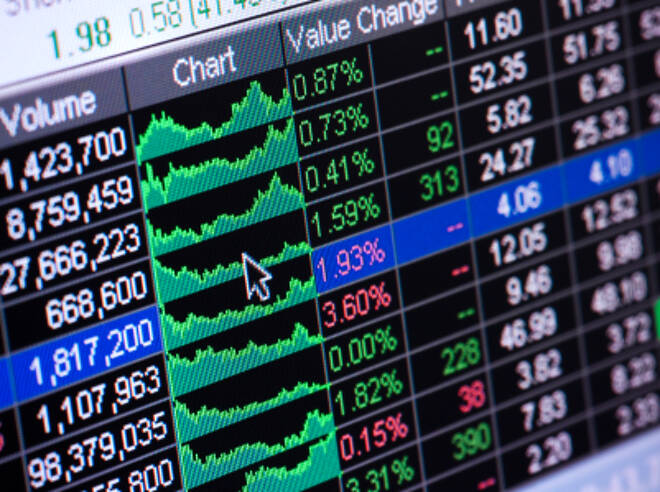Advertisement
Advertisement
Trade Dispute Raising Concerns, but U.S. Investors Shielded from Worst, So Far
By:
Once again, it appears that U.S. investors have been largely shielded from the worsening effects from the tariffs that have weakened other countries. Additionally, domestic GDP rose 2.9% in 2018 and 3.1% in the first quarter of 2019, inflation has been subdued and the labor market has held up for the most part.
The major Asian stock indexes are under pressure early Thursday, following the weaker trail left by Wall Street. Shares in Hong Kong led the declines for a second session as investors continued to react to domestic turmoil. The Australian market received a slight boost after a rise in the unemployment rate increased the chances of a Reserve Bank of Australia rate cut in July.
At 04:10 GMT, Japan’s Nikkei 225 Index is trading 21007.68, down 122.04 or -0.58%. Hong Kong’s Hang Seng Index is at 27076.76, down 231.70 or -0.85% and South Korea’s KOSPI Index is trading 2091.96, down 16.79 or -79%.
China’s Shanghai Index is trading 2912.82, down 16.93 or -0.80% and Australia’s S&P/ASX 200 is at 6545.40, up 1.70 or +0.83%.
Violent Clashes in Hong Kong
Political risk continued to pressure shares in Hong Kong amid violent clashes between protesters and riot police over a controversial extradition bill. Investors are worried the unrest in the country will damage Hong Kong’s reputation as a major international business center. Government offices in the financial district were closed for the rest of the week due to the protests.
Big Name Profits Down, but No Major Concerns from U.S. Investors Yet
The trade war and global economic slowdown are combining to drive down the profits of many U.S. multinational companies, but so far investors haven’t hit the panic button.
According to Factset, companies that derive more than half their sales outside the U.S. are expected to see a 9.3% slump in second-quarter earnings as the reporting season looms about a month away. The data analysts forecast S&P 500 earnings to post a 2.3% decline. Of the S&P 500’s 11 sectors, information technology is expected to see the biggest drop-off in earnings at 11.8%.
Factset went on to say that companies that see half their business come from inside the U.S., earnings are expected to grow 1.4% as they are not subject to the rising costs of imported goods and seeing their wares subjected to duties in foreign markets.
The report suggests that diversification and strategic asset allocation may be the key to avoiding huge portfolio losses. It may also explain why the sell-off in May wasn’t as dramatic as the down move last fall.
Furthermore, from October 2018 to December 2018, the Fed was hawkish and projecting further rate hikes. Since January it has gone from hawkish to less-hawkish, giving stock market investors enough breathing room to drive the major indexes to within striking distance of all-time highs.
Last week, Federal Reserve Chairman Jerome Powell indicated central bank policymakers stand ready to protect the economic expansion. This helped trigger a rapid turnaround in the markets. Once again, it appears that U.S. investors have been largely shielded from the worsening effects from the tariffs that have weakened other countries. Additionally, domestic GDP rose 2.9% in 2018 and 3.1% in the first quarter of 2019, inflation has been subdued and the labor market has held up for the most part.
About the Author
James Hyerczykauthor
James Hyerczyk is a U.S. based seasoned technical analyst and educator with over 40 years of experience in market analysis and trading, specializing in chart patterns and price movement. He is the author of two books on technical analysis and has a background in both futures and stock markets.
Advertisement
